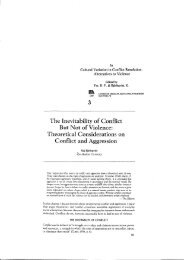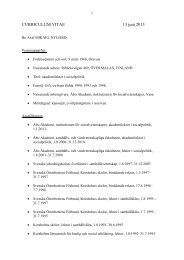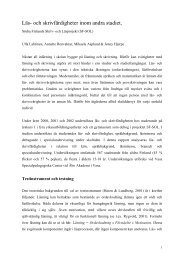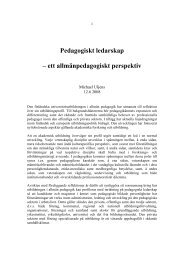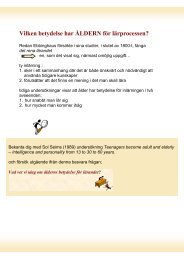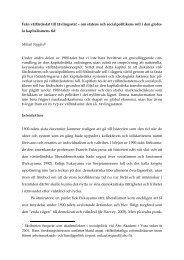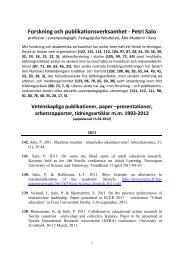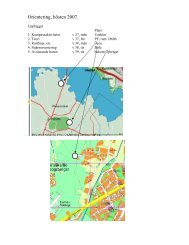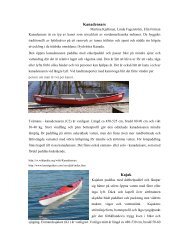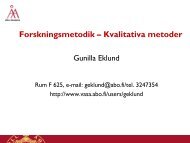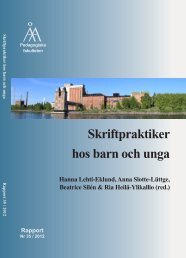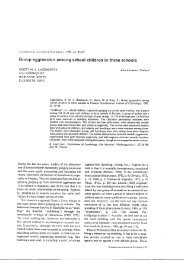Parties, Candidates and Citizens On-Line - Åbo Akademi
Parties, Candidates and Citizens On-Line - Åbo Akademi
Parties, Candidates and Citizens On-Line - Åbo Akademi
Create successful ePaper yourself
Turn your PDF publications into a flip-book with our unique Google optimized e-Paper software.
stored locally two weeks prior to the elections in order to provide a ‘snapshot in time’ of<br />
the on-line campaigns. Publicly-available data on the c<strong>and</strong>idates was also collected 5 for the<br />
purpose of analyzing the causal effects of the independent variables on c<strong>and</strong>idate web<br />
presence. The characteristics of the on-line c<strong>and</strong>idates were established <strong>and</strong> compared to<br />
the characteristics of the off-line c<strong>and</strong>idates. Logistical regression analysis was opted for<br />
as the analytical tool since the design of the study required that the inter- <strong>and</strong> intra-party<br />
variables were controlled against the c<strong>and</strong>idate- <strong>and</strong> constituency demographics for their<br />
independent effects on the dichotomous dependent variable web presence.<br />
In order to analyze the second research question (RQ2), focus was turned to the<br />
websites of the 874 c<strong>and</strong>idates who campaigned on-line. As a first step, in finding a<br />
means for defining <strong>and</strong> measuring website functions <strong>and</strong> delivery, quantitative content<br />
analysis was opted for. The methodology for analyzing political websites proposed by<br />
Gibson <strong>and</strong> Ward (2000) proved useful in this regard. The main rationale for opting for<br />
this scheme was that it included the delivery aspect of political websites. Since this article<br />
concerns patterns of electoral competition in c<strong>and</strong>idate on-line campaigning, both<br />
functions <strong>and</strong> delivery need to be empirically addressed (cf. Gibson & Ward 2002: 107-8).<br />
The scheme was initially developed from, <strong>and</strong> makes use of, many features used in<br />
existing research (e.g. Cunha et al. 2003; Kamarck 1999; Newell 2001; Norris 2003). The<br />
scheme both summarizes <strong>and</strong> st<strong>and</strong>ardizes the existing methods for content analysis of<br />
political websites. Through explanatory <strong>and</strong> confirmatory factor analysis, Gibson <strong>and</strong><br />
Ward categorized website features into ordinal indices mainly centred on two aspects of<br />
websites; namely functions <strong>and</strong> delivery. The indices are either sum-variables, with fixed<br />
maximum values, of dichotomous variables noting the presence or absence of certain<br />
features, or sum-variables, with no set maximum value, mixing dichotomous variables<br />
with counts. A modified version 6 of this coding scheme (see Appendix) was used in this<br />
study. The functions of each c<strong>and</strong>idate website were coded 7 into five index scales;<br />
information provision, resource generation, networking, participation <strong>and</strong> campaigning.<br />
The delivery of the websites was similarly coded into five index scales; multimedia,<br />
accessibility, navigability, freshness <strong>and</strong> visibility. Then, the index scales were thereafter<br />
entered as dependent variables into the conceptual model, after which their dependency<br />
on the independent variables was checked. The analysis was conducted using two separate<br />
OLS multiple regression models.<br />
Some of the variables’ categorizations need to be presented before turning to the<br />
findings. Party size is categorized similarly to Norris’ (2003: 28) criteria; major parties are<br />
those with over 20% of all seats in the parliament; minor parties are the remainder of the<br />
parties with parliamentary representation <strong>and</strong> fringe parties are parties outside the<br />
parliament. Next, competitiveness was initially established based on common knowledge<br />
of c<strong>and</strong>idates’ seriousness with their campaign. In difficult cases (N=1352) judgments<br />
125



